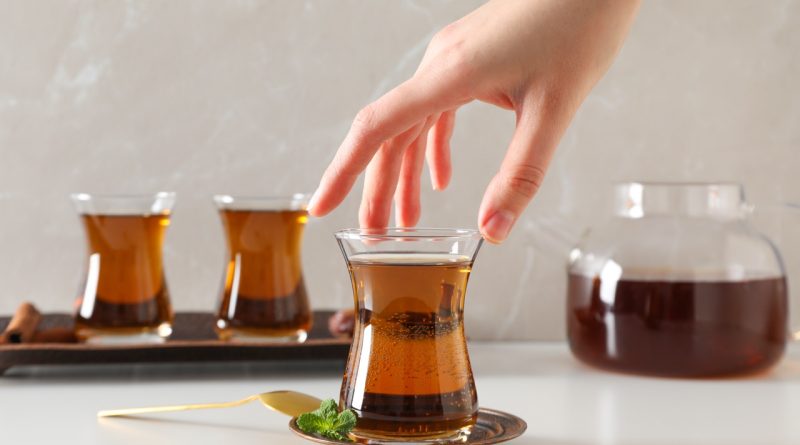The Technical Precision Behind Adagio’s Brewing Instructions
In the world of tea, precision is key to unlocking the full potential of each leaf. Adagio Teas, known for its meticulous brewing instructions, emphasizes the importance of accuracy in temperature, timing, and water quality. By understanding the technical aspects behind these guidelines, tea enthusiasts can elevate their brewing practices and enhance the overall experience of their chosen blends. This article delves into the intricacies of Adagio’s brewing instructions, offering insights that will benefit both novices and seasoned tea drinkers alike.
Understanding the Importance of Accurate Brewing Temperatures
The temperature at which tea is brewed significantly impacts the extraction of flavors and aromas. Each type of tea has a specific optimal brewing temperature that helps to maximize its unique characteristics. For example, delicate green teas generally require lower temperatures, around 160°F to 180°F, to prevent bitterness and to preserve their subtle flavors. In contrast, black teas thrive at higher temperatures, typically between 200°F to 212°F, allowing for a fuller extraction of tannins and robust flavors.
Adagio’s precise brewing guidelines are rooted in scientific principles. When brewed at the correct temperature, the water interacts with the tea leaves in a way that facilitates the release of essential oils, polyphenols, and other compounds. If water is too hot, it can scorch lighter tea varieties, while water that is too cool may result in a weak infusion. By adhering to these temperature recommendations, tea drinkers can ensure a balanced and flavorful cup.
Understanding the importance of brewing temperatures not only enhances flavor but also affects the health benefits associated with tea. Certain compounds, such as catechins and antioxidants, are best extracted at specific temperatures. By following Adagio’s instructions, tea drinkers can maximize both the taste and the health benefits of their brews.
Brewing Time: The Key to Unlocking Flavor Potential
Brewing time is another crucial factor that can make or break the tea experience. Each type of tea has a recommended steeping duration that allows for optimal flavor extraction without crossing into bitterness. For example, black teas usually require a longer steeping time of 3 to 5 minutes, while green teas often need only 2 to 3 minutes. This variability in brewing time can significantly alter the taste profile of the tea.
The science behind steeping time lies in the gradual infusion of flavors and compounds from the leaves into the water. As tea steeps, different compounds are released at different rates. Initial steeping may yield bright and floral notes, while extended steeping can lead to the release of harsher, more astringent flavors. Adagio’s precise recommendations ensure that tea drinkers can enjoy the best of what each tea has to offer without risking over-extraction.
Timing is also important for consistency. Many tea drinkers find it helpful to use a timer to monitor their steeping process. This practice not only aids in achieving the desired flavor profile but also allows for experimentation with different steeping times. By adjusting the duration according to personal preference, enthusiasts can discover a myriad of flavor nuances within the same tea.
The Role of Water Quality in Tea Brewing Success
Water quality is a fundamental yet often overlooked aspect of brewing tea. The mineral content, pH level, and overall purity of water can significantly influence the taste of the final brew. Adagio highlights the importance of using fresh, filtered water to ensure that impurities do not interfere with the tea’s natural flavors. Tap water, which may contain chlorine or other additives, can detract from the delicate notes of high-quality teas.
Hard water, which is high in calcium and magnesium, can also lead to a flat or dull taste in tea. These minerals can bind with the tea compounds, preventing full flavor extraction. Conversely, very soft water can produce a tea that lacks body and character. Finding the right balance in water quality is essential for achieving the desired taste and aroma in your brew.
For the best results, tea drinkers are advised to experiment with different water types and brands to discover which complements their chosen tea best. Additionally, using the right temperature for the water can enhance the overall quality of the brew, creating a harmonious balance between the tea and the water used in the infusion.
Practical Tips for Perfecting Your Brewing Technique
To achieve the perfect cup of tea, it’s essential to combine all the elements—temperature, time, and water quality—into a cohesive brewing technique. First, always measure your tea leaves accurately using a scale or a dedicated tea spoon. The ideal ratio typically ranges from 1 to 2 teaspoons per 8-ounce cup, depending on the type of tea. This ensures that the flavor extraction is neither too weak nor overpowering.
Secondly, investing in a quality thermometer can help in achieving precise brewing temperatures. Many tea drinkers find that using a kettle with temperature control can streamline the process, allowing for immediate adjustments. This convenience enhances the brewing experience, making it easier to achieve the desired results every time.
Lastly, maintaining a clean brewing environment is crucial. Regularly washing teapots, infusers, and cups can prevent lingering flavors from previous brews, ensuring that each cup is enjoyed in its purest form. By incorporating these practical tips, tea enthusiasts can refine their brewing techniques and enjoy a consistently excellent tea experience.
Understanding the technical precision behind Adagio’s brewing instructions can transform the way tea is enjoyed. By paying close attention to brewing temperatures, steeping times, and water quality, tea drinkers can unlock the full flavor potential of their favorite blends. With practice and attention to detail, anyone can master the art of tea brewing, leading to a richer and more satisfying experience. Whether you’re a casual drinker or a dedicated enthusiast, these insights will help you appreciate the subtleties of each cup.
